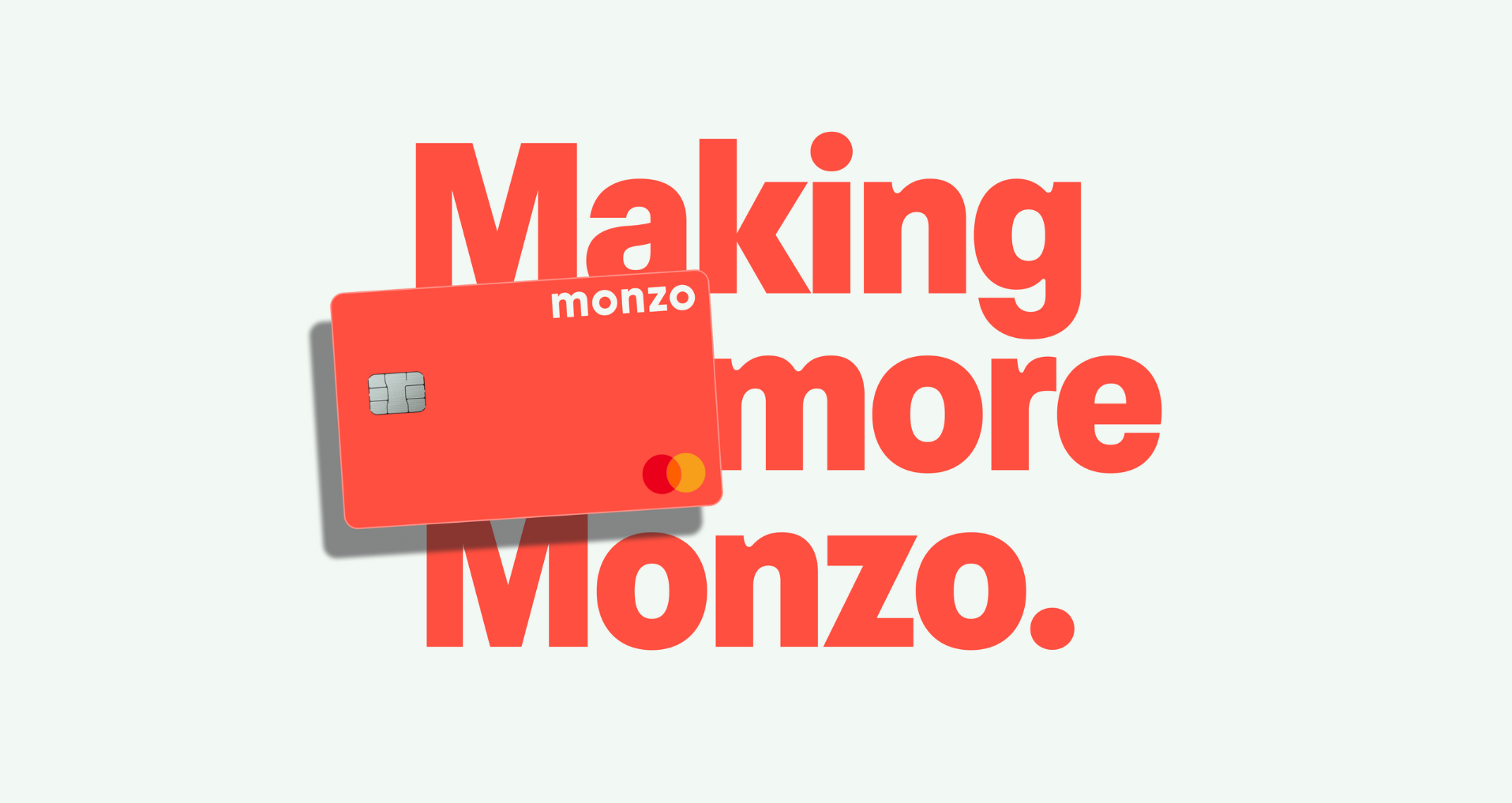How often do you get the chance to name something other than a child or maybe a new pet? A couple of years ago, I was helping to name a fintech startup and there was only really one consumer reference in the market. Monzo was the millennial generation’s most recommended brand – not just in banking – but in any sector. The neobank’s digital-first service combined with a distinctively useful and down-to-earth tone of voice made it easy to love.
But would those millennials have felt the same if the bank had been called Mondo? Because it very nearly was.
Early on, while they were still working towards their banking permissions, the challenger bank ran into a trademark dispute. So they changed one letter, and the rest is history.
Of course, it’s impossible to say if that “z” has made any difference to brand performance. I suspect not. Personally, I think Monzo sounds like one of the Muppets. But if there’s one thing you learn quickly when it comes to naming consumer brands and products – it doesn’t really matter what people think as long as it works.
Post-specified success
Another way to put this – things grow into their names. It’s frustrating when pitching a name to run up against the personal preferences of stakeholders (investors, founders’ spouses…), because you know that once the brand is fleshed out and the company or product starts to gain traction, the name will gain traction too.
And if there’s one clear way to test this theory – try changing a brand name once it’s established. Suddenly everyone loves the original. Anyone else still saying “formerly Twitter”? Or feeling wrong about Snickers, 34 years on? (Your wait for justice may be over, albeit temporarily).
We saw this when I was at the fintech Cardeo when, like Monzo, we too hit up against a trademark objection. We were advised to come up with another name. Upon testing alternatives with our customers, they unanimously preferred the original, as did the investor who had disliked it at the start and had been mispronouncing it reliably in every forum for the previous 12 months.
In the end it was a moot point because miraculously we secured a concession allowing us to keep the original name.
The caveat for a name being successful, however, is as long as it works. First, let’s assume that everyone got the memo that the name should be apposite in tone to the type of company, product or service, and to the target markets. Second, there are the practical considerations without which a name can really tank. Far from how you might imagine a creative process to play out, these are about strategically selecting a name which works for you on a pragmatic level.
Can it be trademarked?
As already alluded to with Monzo and Cardeo – are you going to be able to trademark your name? This gives you the right you to stop other people using your name or something similar in a way that may confuse consumers, at the same time as protecting you from being blocked by somebody else.
Having successfully branded one company with a common adjective, I know that not every business needs to be trademarked. I also know that not every trademark needs to be unique (anyone heard of Apple?) The ins and outs of trademark law and process – whether a word mark is inherently protectable; whether it is sufficiently unique; the classes of business you intend to operate in; the potential dangers from marks which are similar if not identical – are various, and complex enough to warrant engaging a trademark legal specialist early on.

Before deciding on ‘Monzo’ as it’s final name, Mondo asked for the public to suggest new potential names. It even registered bankymcbankface.co.uk just in case, which, for a while at least, redirected users to Mondo’s website.
How important is a domain name?
Website domain names range in price from free to millions of pounds. When Elon Musk bought x.com back from Paypal in 2017 for “sentimental” reasons, it was likely for an eight-figure sum. It had already sold for $6.8 million three years before that. Musk really wanted that domain – five years before he even knew what to do with it.It shows the power of a direct and simple name, and some would say, of the classic .com top-level domain (TLD).
In truth, other domains such as .co or country or sector specific TLDs will not damage your brand or slow your growth in any way. Nor will having to be creative with your website address particularly affect search engine performance, given that there are so many other aspects of an organisation’s online identity that feed findability.
That said, I persuaded one company to part with tens of thousands of pounds for a canonical .com, because of cognitive fluency. Cognitive fluency is the effortless quality we confer upon something that is easy to accomplish. Our brains are wired to appreciate it from our cave days, when unfamiliar things were a threat. We associate the easy with the familiar, and consequently trust it more. And we remember it for next time.
That’s why simpler trading names have been shown to outperform in the stock market, and short styled race horses attracted more backing.
If you want your brand to be remembered, then make it fluent. Depending on where online channels sit in your strategy, you may want to extend this principle to your domain name and social handles.
How is your brand name going to be used?
Generic trademarks, where a brand name becomes synonymous with and even replaces the object name (hoover for vacuum cleaner for example), may be something of a holy grail for branding. But workshopping whether, and how, names could be a proprietary eponym for you is a route to some strong candidates for brand names.
There are a host of other ways that might give it an advantage in your market. Back in the phone book days, it helped to be at the start of the alphabet. In the digital world, it’s more important to think about fluency, such as unambiguous spelling and sticking to standard characters. This is why your brand team must test out prospective names in realistic environments.
Show potential names mocked up in search results, in social accounts, on websites and in app stores, in customer support scripts and apology press releases, as well as testing pronunciation, associations and memorability with real customers. It also helps to know someone with a really dirty mind for euphemism alerts, and to check candidate names against Urban Dictionary as well as other languages. You don’t want to be the dog owner embarrassed to shout out your pet’s name every time you go for walkies.
Finding the needle in the haystack
If all of that makes it seem an impossible task to find a name for your business or product, you’re almost right. It’s not impossible, but it does take time.
From my own experience strong names often come from one of the following pathways:
- Descriptions (Compare the Market, Bank of England, American Airlines)
- Proper names (Ford, Ben & Jerry’s, Goldman Sachs)
- Initialisms and acronyms (IBM, H&M, Nato)
- Common words (Apple, Nationwide, Red Bull)
If your strategy requires something more unique, you can add a twist:
- Blend two words – either portmanteaus (Microsoft, Wikipedia) or using camel case (PayPal)
- Misspell it (Google, Lyft, Netflix, Abrdn)
- Add a top level domain (booking.com, dictionary.com)
Or you could try to make up something completely new instead – by deriving a new word (like Pepsi) or inventing a true neologism (like Kodak and Xerox).
The key is to remember the brief, including those strategic, practical considerations, to create the strongest performing brand possible. Brand stories can be retrofitted but trademarks and domain names are less malleable, as is the discovery that your company designation means something obscene in Portuguese.
Taking a pragmatic approach might seem unsexy but it’s important not to fall in love with names too soon. Hold them lightly. Be tactical. If Mondo had been a deal-breaker, we would never have had Monzo.





